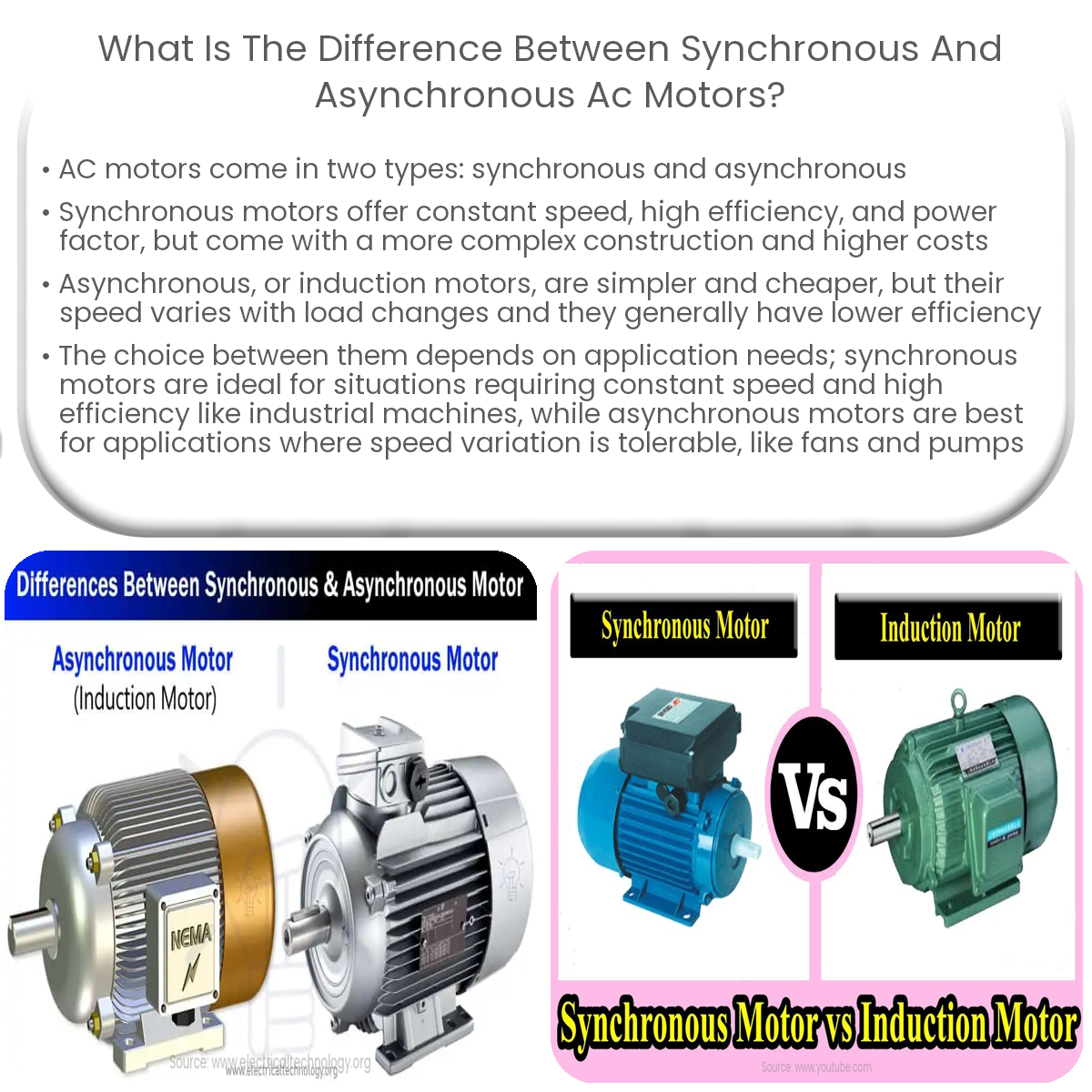Synchronous motors maintain a constant speed, while asynchronous motors’ speed varies with load. Synchronous motors are more efficient, but asynchronous motors are simpler and cheaper.
Synchronous and Asynchronous AC Motors
AC motors are widely used in various industrial and domestic applications due to their efficiency and simplicity. There are two main types of AC motors: synchronous and asynchronous. In this article, we will discuss the differences between these two motor types.
Synchronous AC Motors
Synchronous motors operate at a constant speed, which is directly proportional to the frequency of the AC supply voltage. The rotor speed is synchronized with the stator’s rotating magnetic field, hence the name “synchronous.” These motors usually have a separate DC excitation source for the rotor, creating a magnetic field that interacts with the stator’s magnetic field.
- Constant speed regardless of load changes
- High efficiency and power factor
- Can operate as generators in some applications
- More complex construction and higher cost compared to asynchronous motors
Asynchronous AC Motors
Asynchronous motors, also known as induction motors, are the most commonly used type of AC motor. The rotor speed is not synchronized with the stator’s magnetic field, resulting in a difference called “slip.” The rotor’s magnetic field is generated by induction, as the stator’s magnetic field induces a current in the rotor.
- Simple construction and lower cost compared to synchronous motors
- Self-starting, no separate excitation source required
- Speed varies with load changes
- Lower power factor and efficiency compared to synchronous motors
Comparison and Applications
While both synchronous and asynchronous AC motors have their advantages, the choice between them depends on the specific application and requirements. Synchronous motors are well-suited for applications where constant speed and high efficiency are critical, such as large industrial machines, generators, and precise positioning systems. On the other hand, asynchronous motors are suitable for applications where speed variation is acceptable and simplicity is desired, like fans, pumps, and general-purpose machinery.
In conclusion, the main difference between synchronous and asynchronous AC motors lies in their speed regulation and construction. Synchronous motors offer constant speed and high efficiency, while asynchronous motors provide simplicity and lower cost. Understanding the differences between these motor types helps in selecting the right motor for various applications.


